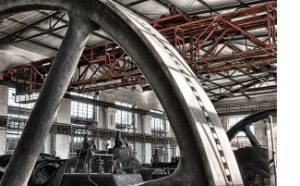Everything You Need to Know About Manufacturing: 20 Manufacturing Statistics
 Manufacturers big and small play an important role in the U.S. economy; according to the United States Census Bureau, manufacturers are the nation’s fourth-largest employer and ship trillions of dollars in goods every year. Whether it’s a large auto plant churning out cars or an establishment with fewer than 50 employees, manufacturers are critical to the country’s global success. Yet many people have misconceptions about the manufacturing industry — that jobs are undesirable and low-paying, or that the United States is rapidly losing ground to China.
Manufacturers big and small play an important role in the U.S. economy; according to the United States Census Bureau, manufacturers are the nation’s fourth-largest employer and ship trillions of dollars in goods every year. Whether it’s a large auto plant churning out cars or an establishment with fewer than 50 employees, manufacturers are critical to the country’s global success. Yet many people have misconceptions about the manufacturing industry — that jobs are undesirable and low-paying, or that the United States is rapidly losing ground to China.
In reality, the United States’ manufacturers are still going strong and offer a wide range of well-paying jobs. Here are 20 manufacturing statistics and facts you should know.
U.S. Manufacturing Facts: Global Impact
Think the United States is falling behind? Not true! The United States’ manufacturing industry is still a major power player in the global economy:
1. According to the 2016 Global Manufacturing Competitiveness Index (GMCI), the United States’ manufacturing industry currently ranks #2. It is predicted to surpass China in 2020 and become #1. Behind China and the United States are Germany (#3) and Japan (#4), which are all predicted to retain their rankings in 2020.
2. The U.S. is the second largest manufacturer in the world and is responsible for 17% of world manufacturing activity.
3. If the U.S. manufacturing sector were its own economy, it would be the seventh largest in the world, with $2.2 trillion of value added in 2015.
U.S. Manufacturing Facts: Domestic Impact
In addition to its global impact, the manufacturing industry offers many opportunities domestically, including economic growth in a variety of areas.
4. $1.00 spent in manufacturing creates $1.40 for the U.S. economy. Manufacturing comprises nearly 12% of our GDP.
5. In 2012 there were 297,191 manufacturing establishments in the U.S. The value of their shipments was $5,696,730.
6. The largest number of establishments in manufacturing are located in the private industry.
7. The manufacturing sector is bigger than you might think. According to the Bureau of Labor Statistics, the manufacturing sector “comprises establishments engaged in the mechanical, physical, or chemical transformation of materials, substances, or components into new products,” which can include “bakeries, candy stores, and custom tailors.”
8. The top three states with the largest manufacturing concentration are Indiana, Wisconsin, and Michigan. However, the states with the most manufacturing jobs are California, Texas and Ohio. Although manufacturing covers many sectors, the largest source of jobs comes from transportation, food, and fabricated metal.
Manufacturing: Employment Facts
Although manufacturing jobs took a hit in the recession, the industry is starting to recover and is now providing millions of desirable jobs to U.S. workers:
9. Manufacturing still employs nearly 9% of the U.S. workforce.
10. According to an infographic by the National Association of Manufacturers, manufacturing supports more than 18.5 million U.S. jobs. This includes not only hands-on jobs like welders, assemblers, and fabricators but also positions in design, human resources, and sales/marketing.
11. The top three manufacturing jobs are production workers (including semiconductor processors), assemblers and fabricators, and managers.
- According to Payscale, the annual pay for these positions is…
- – Production worker
- – Assesmbler/Fabricator
- – Manager
12. In October 2017, the average hourly earnings of employees in manufacturing was $26.77 an hour with an average of 41 hours a week.
13. During the first half of 2016, manufacturers provided 65% more in benefits per hour of employee work than employers in the service industry.
14. According to the U.S. Department of Labor’s job tenure data (collected every two years), the median employed manufacturing worker had 5.3 years of tenure with their employer in January 2016 compared with only 3.7 years for the overall private sector.
15. 71% of workers in the manufacturing industry are men; however, the conversation around recruiting more women is growing.
-
- – Ways to get more women into manufacturing
- – Manufacturing leaders are looking to recruit more women
Manufacturing Highlights
The manufacturing industry continues to make strides and improve the way it does business, including the implementation of more environmentally-friendly practices and dedication to growth:
16. A 2015 study from the National Bureau of Economic Research notes that between 1990 and 2008 air pollution emissions from U.S. manufacturing fell by 60% despite a substantial increase in U.S. manufacturing output.
17. Manufacturing Day was started in 2012 and occurs on the first Friday of October. Manufacturing Day celebrates modern manufacturing and has grown over 1,000% since its inception. Here’s why now it’s more important than ever to pay attention.
18. The global aerospace and defense industry is likely to experience stronger growth in 2017. Following multiple years of positive but a subdued rate of growth, the report forecasts the sector revenues will likely grow by about 2.0 percent in 2017.
3D Printing Facts
3D printing is just one subset of the manufacturing industry.
19. According to a report by Markets and Markets, the 3D printing industry is expected to be worth $32.78 billion by 2023.
20. 3D printing jobs are on the rise.
Learn More
See more facts about manufacturing and find the best 3D Printing solution for you.
Related Articles
Office 3D Printing, Do You Have a Strategy?
3D Printing for Aerospace: 3D Printed Airplane Parts and More
Reducing the Cost and Lead Time of Form Tooling with Additive Manufacturing

 Blog
Blog